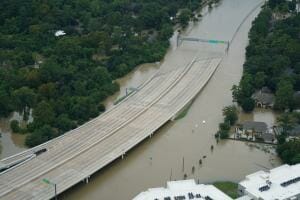The 2017 hurricane season made history as the most expensive hurricane season to date. Last year, hurricanes Harvey, Irma, and Maria (along with 14 others) took their toll on our country’s citizens and infrastructures to the tune of over $200 billion. While our local governments are often best prepared to provide immediate disaster relief efforts, it can come at an expense that is difficult for them to absorb without assistance. Federal disaster aid programs, like those run by the Federal Emergency Management Agency (FEMA), have provided state, local, and tribal governments with grants to help with all types of natural disasters, from hurricanes in the East to wildfires in the West. Unfortunately, along with this assistance comes administrative challenges. Governments who utilize federal grants to help rebuild after a natural disaster must follow certain steps before, during, and after the event to comply with FEMA guidelines.
Tips to Maximize Federal Disaster Aid
To ensure that they receive the aid they are entitled to, federal aid recipients should concentrate on two things: (1) the process required by the program, and (2) the documentation of that process.
Program Process
The steps FEMA requires you to take before, during, and after the disaster may differ from your modus operandi. Familiarize yourself with the program’s requirements, and adjust your operations to comply.
Example A:
A FEMA recipient was awarded $1 million for disaster-related debris removal. They solicited bids only from contractors they had used previously. Because FEMA’s procurement process requires free and open competition, the claim was identified as a questioned cost. There was no public exigency (e.g. an immediate need) to support the recipient’s deviation from the FEMA procurement process.
Example B:
A FEMA recipient was looking to repair flood damage to an elementary school. They knew that an open solicitation would take too long to complete the repairs before the beginning of the school year, so to speed up the process, they only solicited bids from contractors they had worked with previously. They awarded the contract to the lowest bidder. FEMA allowed this noncompetitive solicitation because repairing the building before the first day of school was an exigent concern to the community.
It is common for grant recipients to be unfamiliar with FEMA’s requirements, so read the fine print and familiarize yourself with the rules. A few ways that you can ensure you are following FEMA’s preferred process is to:
- Check with your Federal Grant Program Coordinator to ensure your claim could not be funded under a different federal program.
- If you utilized FEMA funds to perform repairs that were later reimbursed by your insurance company, credit FEMA with the amount that insurance covered to avoid duplicate coverage.
- Familiarize yourself with proper procurement practices
- Provide open competition in the bidding process.
- Take affirmative steps to use minority- and women-run businesses.
- Perform a cost analysis before signing a contract with any one business.
- Maintain proper oversight of the workers to ensure the contract is being upheld.
- Understand the situations when noncompetitive proposal methods would be acceptable.
- Compare equipment costs with FEMA’s schedule of equipment rates to ensure the charges are not overstated.
- Do not comingle non-disaster project costs with FEMA project costs.
- Obtain insurance to protect against future losses.
Documentation of Program Process
It is always important to keep detailed records, but to qualify for FEMA assistance it is essential. Every line item on your accounting ledger should be supported by documentation and calculations if necessary.
Example C:
A FEMA recipient documented that they spent $400,000 in labor costs on three different disaster-relief projects. This line item was listed simply as, “salary.” The recipient did not have documentation to support which employees performed the service, when they completed the work, the number of hours that they worked, or which projects they worked on. The claim resulted in an audit finding, and the recipient was required to reimburse FEMA for $400,000.
Some easy things that you can do to help ensure your documentation is adequate is to:
- Assign a point person to accumulate records on any one project.
- Create separate identifiers in your accounting system for each FEMA project.
- Reference every line item on your accounting ledger to the documentation that supports it.
- Keep and scan important paper documents (like checks and invoices) so they can be easily referenced.
- Differentiate between existing inventories and new materials that you use to complete a project.
- Document the process and rationale for how you procured the goods and services for the job.
- Keep records of potential conflicts of interest during procurement.
- Use time-keeping software to record when administrative personnel work on which projects.
Want More Help?
The Department of Homeland Security’s Office of Inspector General (OIG) created a document called Audit Tips for Managing Disaster-Related Project Costs to help potential FEMA recipients fully capitalize on this disaster assistance program by avoiding costly noncompliance. The tips included in the document help recipients to do the following:
- properly document the costs they incurred,
- maximize the amount of assistance they will receive, and
- prevent the fraud, waste, and abuse of disaster-related aid.
As always, we welcome you to contact us with any questions you have. At LaPorte, we have a robust Public Sector Industry Group that is familiar with FEMA-funded projects. We recognize that, even when done correctly, complying with FEMA’s rules can be challenging. We can help you tweak your corporate policies and update your accounting functions to better comply with FEMA requirements. Contact us if you have questions.

